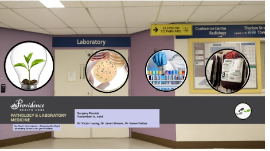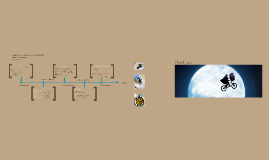Surgery Grand Rounds
Transcript: CC: shortness of breath 9 Make a lateral skin incision overlying the rib that is below the desired intercostal level of entry Indications: - Denies: Nausea, vomiting, diarrhea, HA, sore throat, urinary symptoms -Admits to: fevers, weakness, fatigue, unintentional weight loss 50lb/6 months, shortness of breath, cough, congestion, pleuritic chest pain Opportunistic Infections in AIDS Specimen: left lung, fresh Persistent air leak Bleeding from pulmonary vessels Intercostal nerve damage due to insertion of instruments through ports Complications from single lung ventilation, including respiratory insufficiency or post-operative re-expansion pulmonary edema Tumor implantation following VATS C Per notes – based on presence of oral thrush, his presentation is consistent with HIV, likely his CD4 lymphocyte count is <200. Pathology Report CXR suspicious for Pneumocystis pneumonia. Treatment of choice is TMP-SMX for 3 weeks. Corticosteriods have been shown to improve the course of patients with moderate to severe PCP with oxygen saturation <90% or PaO2 <65mmHg Surgery Grand Rounds Absolute: need for emergent thoracotomy Relative: coagulopathy, pulmonary bullae, pulmonary, pleural or thoracic adhesions, loculated pleural effusion or empyema, skin infection over the chest tube insertion site What labs and imaging do you want to order? Literature Review: Continued 6 POD #0: VATS with pleurodesis & placement of L chest tube POD #1: CXR, suction on chest tube d/c’d POD #2: CXR shows worsening L pneumothorax likely 2/2 airleak, restart suctionPOD #3: CXR shows some improvement POD#4: CXR shows small increase in small L residual apical pneumothorax, +AFB from 2/14, started on RIPE tx for TB, 1-3 beta glucan fungal test positive, Pathology report returns POD #5: CXR shows trace pneumothorax POD #6: CXR stable, Mycobacterium TB complex PCR negative POD #7: CXR shows increased pneumothorax POD #8: CXR stable, must be cleared by the health department POD #9: CXR stable POD #10: CXR stable, no airleak noted POD #11: CXR shows decreasing pneumothorax POD #12: CXR stable, AFB grew M.avium complex x1 POD #13: CXR cleared by Epidemiology department for d/c home with Heimlich valve (one-way valve) Q: You are taking care of 40M with a history of HIV (diagnosed 2 years ago) and has been on therapy without disease progression. You order a PPD. What amount of induration would he be positive for TB? a) Any induration indicates a positive b) 3 mm c) 5 mm d) 10 mm e) 15 mm Heimlich Valve 1. Markedly unstable or shocked patient 2. Extensive adhesions obliterating the pleural space 3. Prior talc pleurodesis Deflated lung Contraindications: Anesthesia: General with selective single lung ventilation using a double-lumen endobronchial tube Positioning: lateral decubitus Steps: 1-4 incisions are used in thorascopic procedures, at least 5cm apart so instruments do not cross “baseball diamond” Endoscope along with instruments are used to manipulate the lung, staple lung biopsy retrieved with endocatch bag through trochar ports. Single stitch or few subcuticular stitches placed if needed. Chest tube placed in normal fashion THANKS, THAT'S IT!!!! Absolute Lymphocyte Count = WBC x Lymphocyte% x10 Vitals Signs: HR 110, RR 20, BP 132/77, T 100.6, O2 saturation 98% RA, wt 165lbs HEENT: NCAT, PERRL, EOMI b/l, no scleral icterus +mild to moderate oral thrush involving the roof of the mouth, no anterior cervical lymph node tenderness but +mildly enlarged lymph node palpated CV: regular rhythm, tachycardic, no murmurs Resp: Right lung – some rhonchi, Left lung – reduced breath sounds Abdomen: soft, ND, no TTP, bowel sounds normoactive x4, no HSM, no jaundice Ext: no edema, no clubbing, pulses strong Neuro: A&Ox4, neurologically intact OMM: b/l suboccipital hypertonicity, b/l hypertonicity with bogginess in b/l upper thoracics, L thoracic diaphragm restricted, L lower rib restriction (Ribs 7-12) Minkes (whale) & Deere 1 Treatments: Suboccipital release Thoracic diaphragm release Paraspinal inhibition MFR of thoracic paraspinal muscles Osteopathic Manipulative Medicine Objectives: To discuss the case presentation of surgical patient To describe the surgical management of the case To discuss the medical management of the patient subsequently To relate this patient to OP&P To provide board-study questions Look for respiration-related swing in the fluid level of the water seal device to confirm correct intrathoracic placement C Pneumothorax (open or closed) (simple or tension) Hemothorax Hemopneumothorax Hydrothorax Chylothorax Empyema Pleural effusion Patients with penetrating chest wall injuries (intentional/unintentional) "Sections show consolidated lung tissue containing alveolar spaces filled with pink foamy amorphous material and numerous macrophages..." "An AFB stain is negative for mycobacteria..." "A GMS stain on specimens A and B highlights numerous organisms consistent with Pneumocystis jiroveci." 7 Recurrent Pneumothorax Left Pneumothorax s/p chest

















